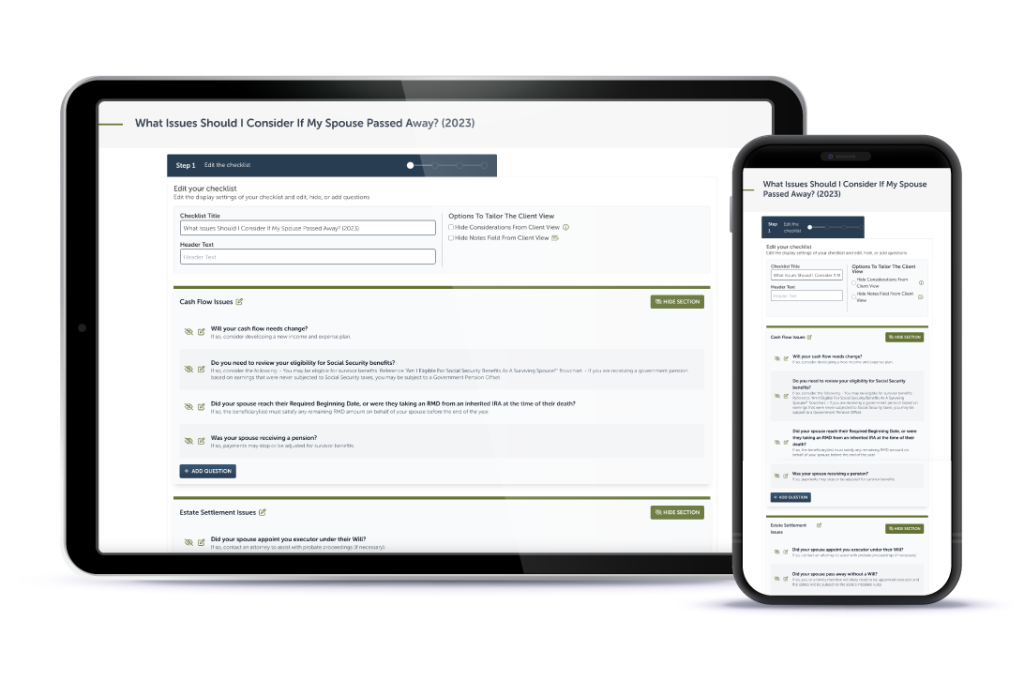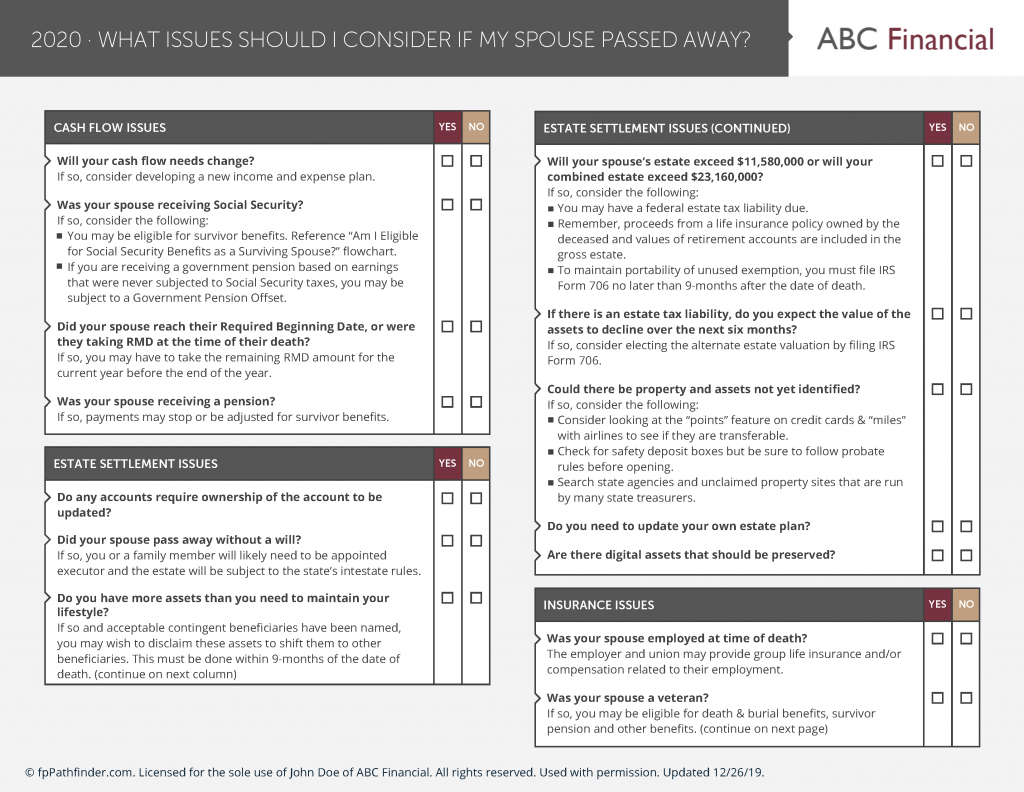There are lots of great ways to use the resources from fpPathfinder with your clients in meetings. Oftentimes, it depends on your own preferences. It may take a little experimenting before you find an approach that is right for you. What follows are several examples of how advisors are using these with their clients.
Above all else, If you’re meeting with a client and are planning to use a checklist or flowchart, the first step is to familiarize yourself with the resource before you meet with the client.
Think of these checklists and flowcharts as conversation aids. Through a conversation, you can begin to identify lots of different planning opportunities and confirm details that you may have otherwise missed.
Some advisors will go through the checklist one question at a time. Others will use it as an outline. It may depend on the client situation and how well you know the client. A new client, in which you know very little about them, may require you to go through each question. In this case, you are able to learn a lot about their situation.
Some members will go through the checklist and cover key questions. Perhaps they highlight the questions they want to focus on, but leave 10-15 minutes at the end of the meeting to quickly go through the other questions to ensure that everyone is on the same page.
In another example, you could break “Issues To Consider In Client Annual Review Meeting” for multiple meetings with the same client in one year. Instead of covering the whole checklist in one meeting, you could address 1-2 sections of the checklist for each meeting. Perhaps in the first meeting of the year, you could discuss the probing questions in the Cashflow section of the checklist. And in the second meeting, you could focus on questions in the Asset and Debt section of the checklist.
As you are going through the resource with the client, if you feel fairly confident about an answer that a client will give… or feel uncomfortable asking a question that you pretty much know the answer to, try turning it around into a statement. Say it out loud so the client knows that you are skipping over certain parts “You don’t have minor children, so these tax breaks don’t apply.”
Some advisors want the client to see that they are working off a checklist or flowchart. It shows to the client that you are detail focused and diligent. If that sounds like you, you can send this to the client in advance of the meeting, or, if you’re meeting virtually, you can share your screen (just be mindful that you are adhering to rules set by your compliance department).
In other cases, some advisors want to keep checklists and flowcharts as their secret sauce. That’s ok too. The point is that these checklists can help uncover planning opportunities to help your client.
It’s important to document the conversation and the answers. Check the boxes as Yes or No for what you have discussed. If you did not discuss a question, leave it blank (perhaps more research is needed, or the client can’t answer the question). That will get categorized later after the meeting.
You just finished going through a checklist with a client, now what do you do with it?



